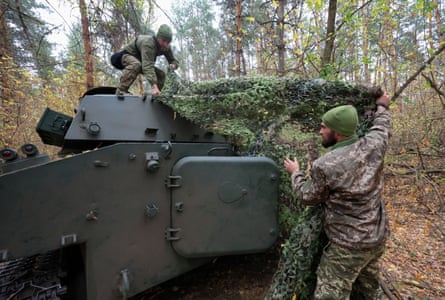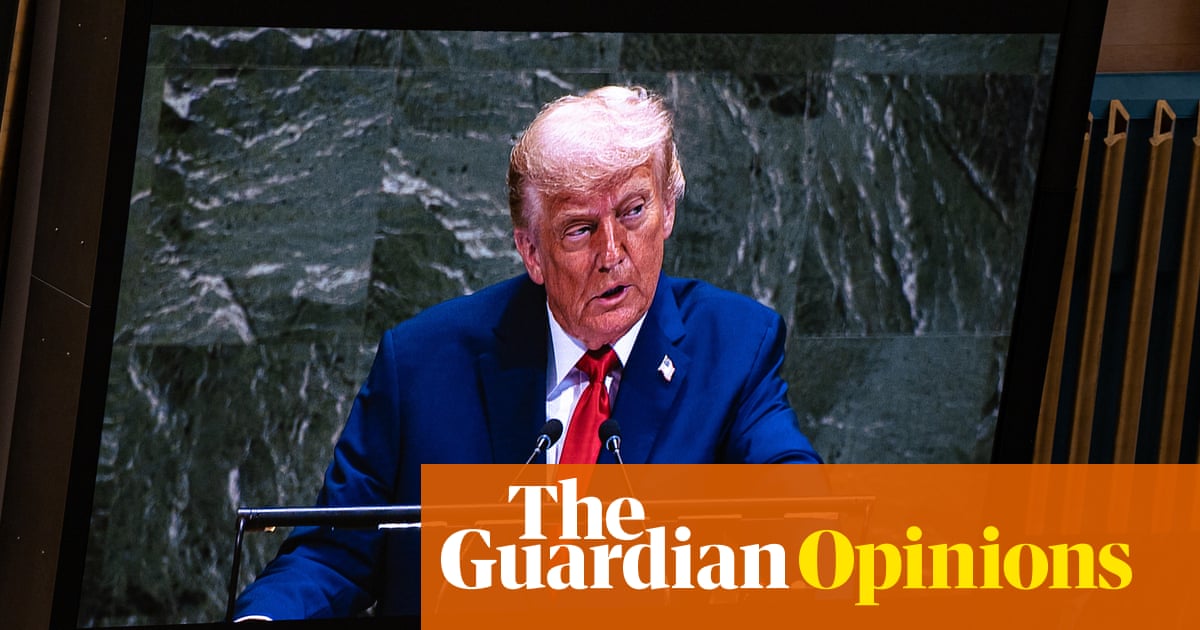Who can keep up? In a single social media post, Donald Trump declared that Kyiv’s under-pressure military could, in fact, “WIN all of Ukraine back in its original form”.
On the plus side, from Ukraine’s perspective, the comments do suggest the US president has definitively abandoned his effort to persuade it to give up Donetsk province for a loose promise of ceasefire talks from Moscow – which was briefly the outcome of his Alaska summit with Vladimir Putin.
The change in Trump’s tone is worth something to Kyiv. But if the US president were to be serious about a Ukrainian battlefield victory, it would require not just further economic sanctions, but a far greater provision of American weapons and probably direct military intervention on the part of the west as well.
Russia has been forced to retreat only during two periods since its full-scale invasion began in February 2022: in the spring of that year, when it was over-extended around Kyiv; and again in autumn 2022, when it faced a similar problem in Kherson and when defences were thinly held in the Kharkiv region before the Kremlin launched a mobilisation drive.
Critically, Ukraine failed with its counteroffensive in the summer of 2023. Western tanks, rockets and armoured vehicles were supplied but used poorly by Kyiv, spreading them out at multiple points along the front in attacks that failed to take account of Russian mines, trenches and other defences.
The gains amounted to six miles at best at one or two points on the front and have long since been eradicated by the slow, but remorseless Russian advance from Avdiivka to the gates of Pokrovsk in central Donetsk. Moscow has held the initiative since early 2024 and shows no sign of relinquishing it.

Trump has talked about hardening economic sanctions, applying secondary tariffs to buyers of Russian oil, but has only applied this to India, not the more significant China. The US president talked of a 30-day deadline before acting in the summer, then shortened it, then forgot about it completely after the meeting in Alaska.
Even so, this would not help Ukraine win the war. A more concerted supply of US weapons would certainly help Kyiv, though Ukraine’s most pressing need is to improve its air defences. But that is not what Trump is offering, posting instead that Ukraine could prevail with “time, patience, and the financial support of Europe”.
What Trump is referring to here is a continuation of the revised weapons supply programme of the summer, where via Nato, European nations pay for US weapons for Ukraine. Though this clearly helps Ukraine, there is little prospect of a dramatic turnaround on the battlefield, in a war that is largely fought via drones.
Ukraine itself has long since acknowledged that it cannot win back lands conquered by Russia through military means. In February, Zelenskyy accepted that some or all of the territory occupied since 2014 would have to be returned to Ukraine by “diplomatic means” while other experts have talked about pursuing a highly militarised defensive strategy.
In military terms, Ukraine would probably only be able to push out the Russian invader in one of two scenarios. One is a radical change in western intervention – perhaps the direct involvement of Nato air power – but the idea is so politically unlikely that it ought to be discounted. The second is a Russian collapse, stemming probably from regime change at the Kremlin, of which, again, there is no sign.

 German (DE)
German (DE)  English (US)
English (US)  Spanish (ES)
Spanish (ES)  French (FR)
French (FR)  Hindi (IN)
Hindi (IN)  Italian (IT)
Italian (IT)  Russian (RU)
Russian (RU)  2 hours ago
2 hours ago
























Comments